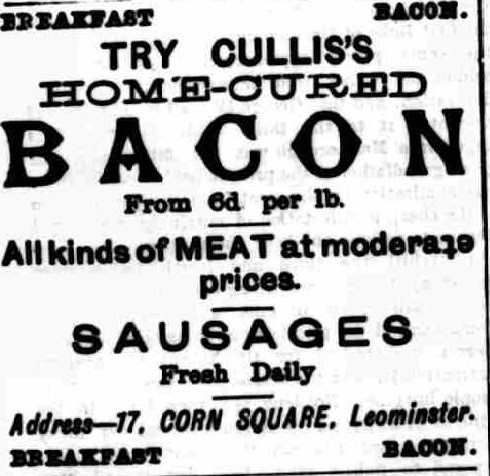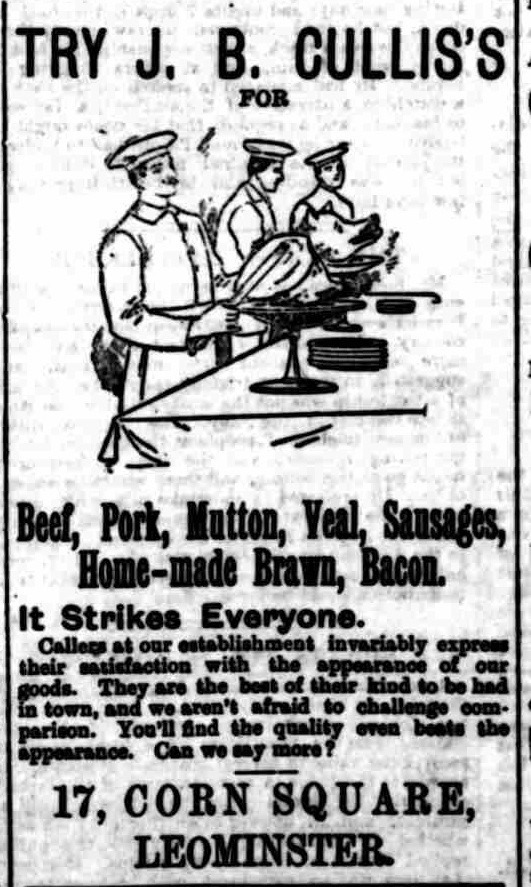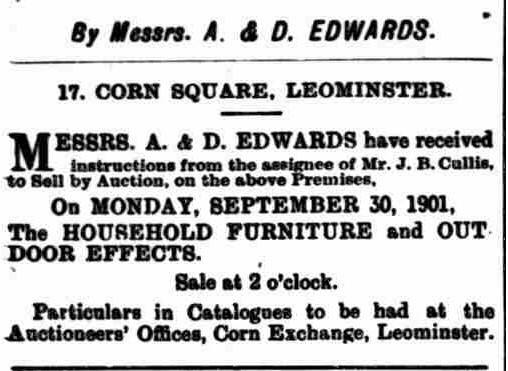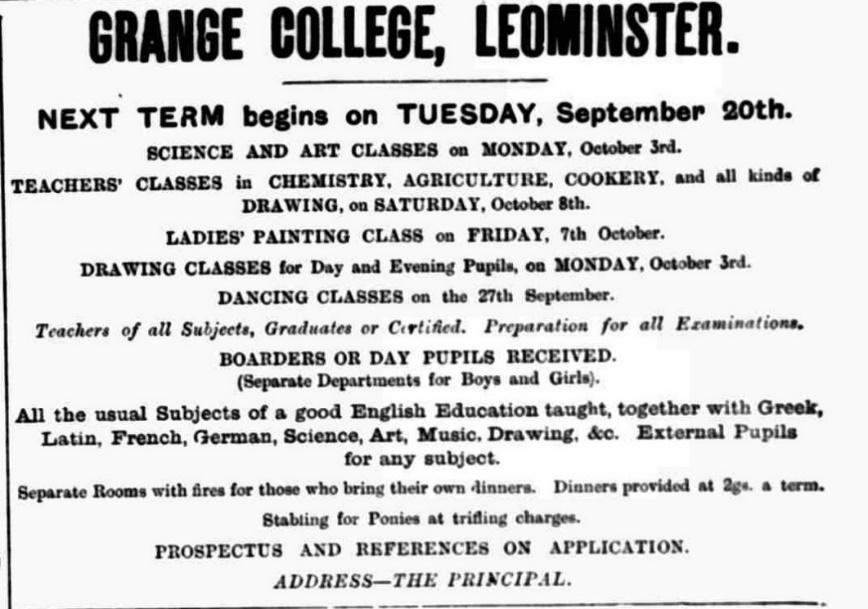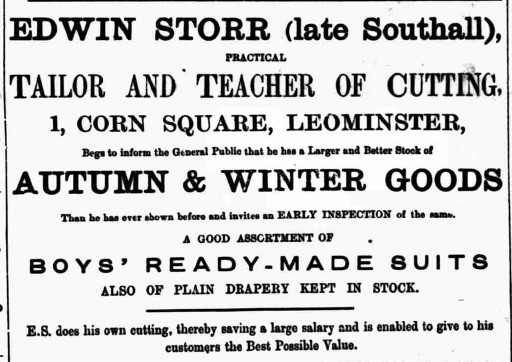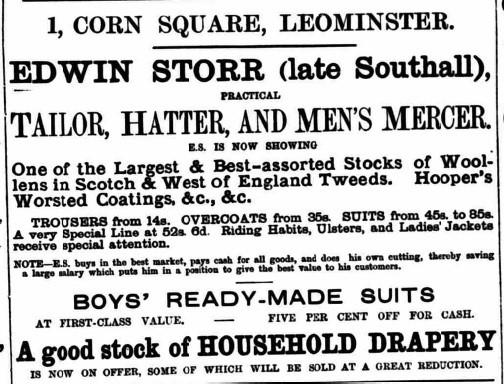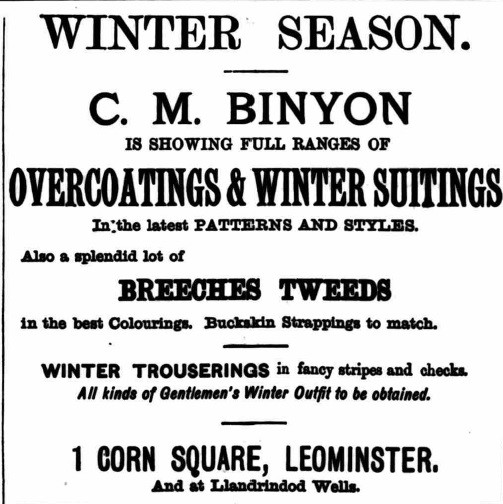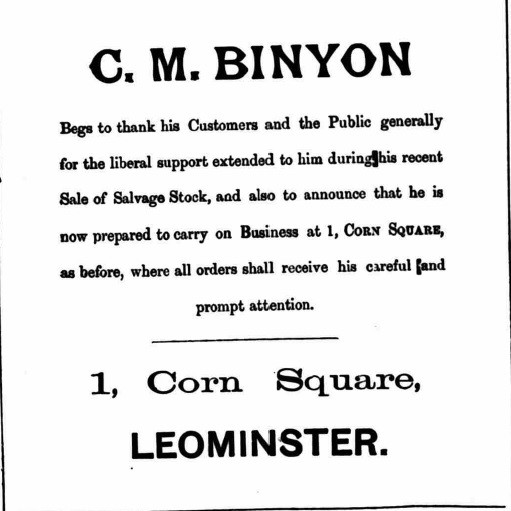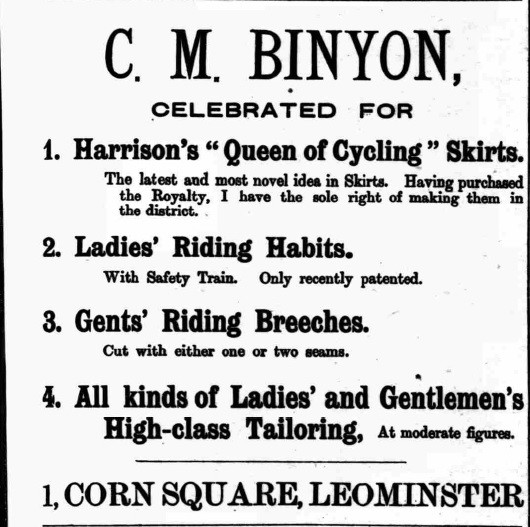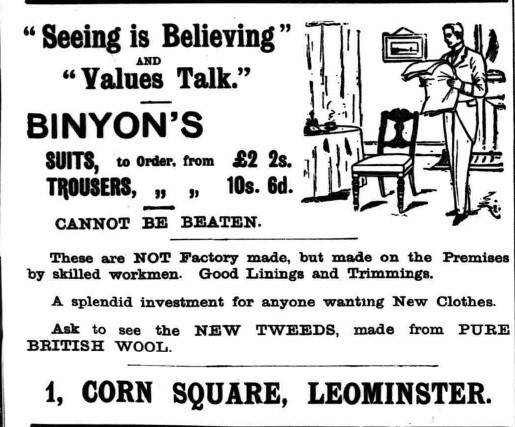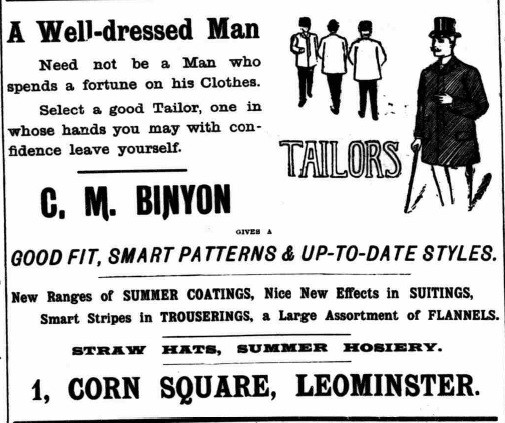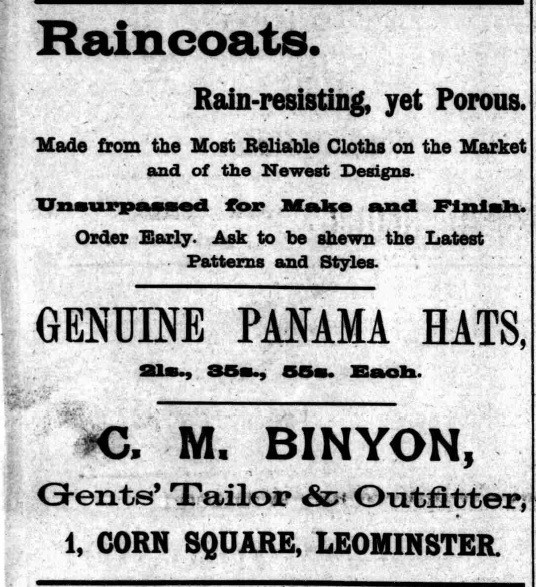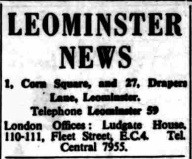Corn Square
Corn Square was first described as le Corncepyng, an informal trading space just outside the walls of the monastic precinct.
By the 1500s, it had become known as Corn Market, and then Corn Square by 1900. Leominster Council built the first Corn Exchange in Corn Square in 1803 to encourage trade. It was replaced in 1859. When not used for trading, this hall held up to 500 people for other events. The Leominster Cinema Company started showing films there in 1911. When the Corn Exchange owners went bust in 1922, the Company bought the building, which became the Picture House. It survived until the 1960s, when it was demolished.
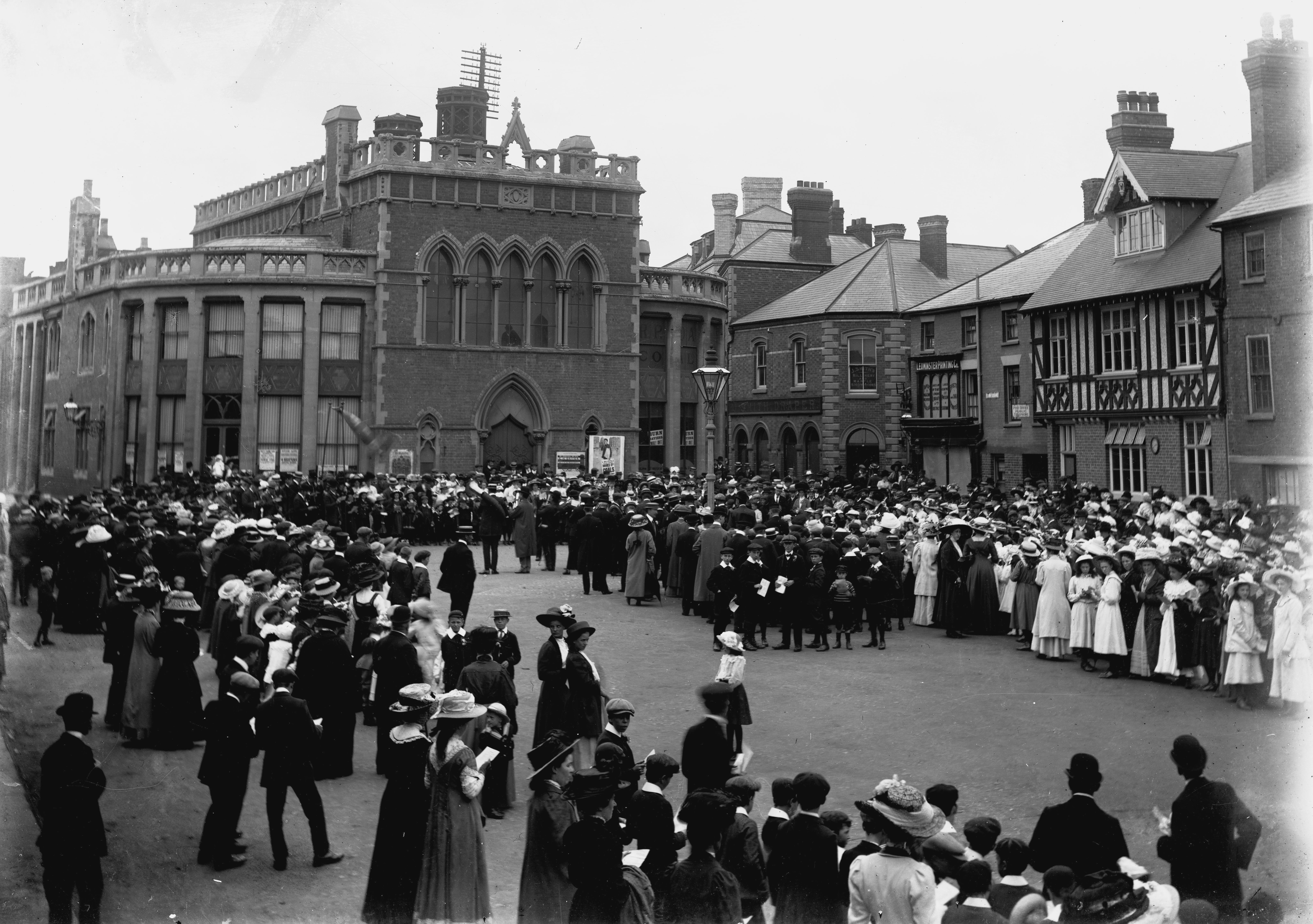
The Rankin Club in Corn Square was used as a Training & Industrial Home for girls, from the 1860s to 1880s. They were taught domestic skills, preparing them for a life in service. The headmaster of Grange Academy then moved his school into the building and renamed it Grange College.
It became co-educational, with boarding & day places. It had a very modern curriculum and advertised adult classes. It seems to have run into financial difficulties, as the Leominster News advertised several fundraising events. The Wetherspoons pub used to be the town’s main Post Office. A weekly market is still held here every Friday.
16 & 17 Corn Square
Now ELT Shoes and Zenith
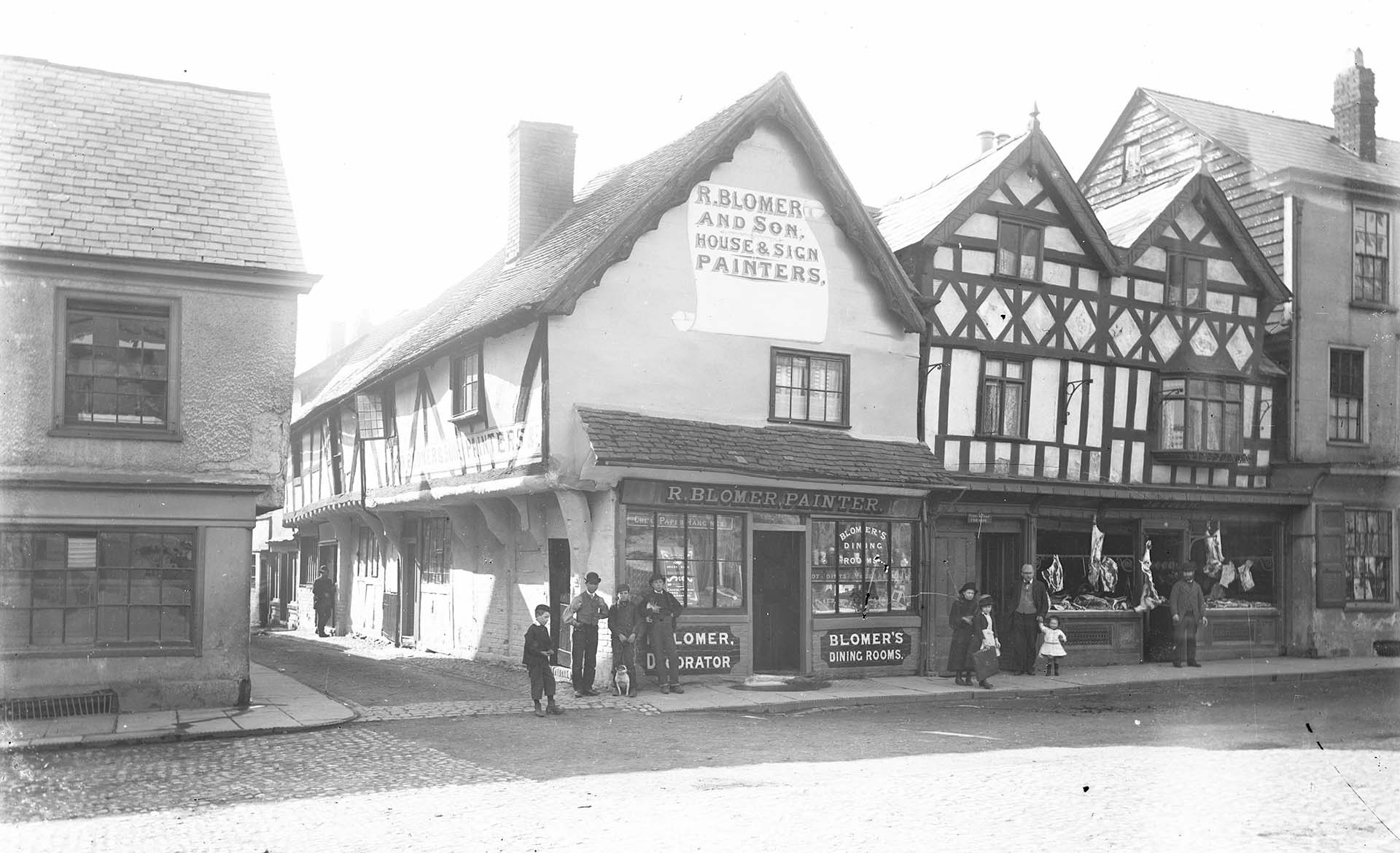
These shops were part of a speculative development by the monks of the Priory in the 1100s, creating shop units for rent.
By the 1400s, the building which now houses the ELT shoe shop and picture framers had four small lock up shops facing onto School Lane. The four shops all had the same ground plan, with a front and back door and shuttered window at ground level. Each shop also had an upstairs room accessed via a shared balcony at the back. In addition, there was another shop facing onto Corn Square. The Priory charged rent for these shops.
In later centuries, the four units were combined, and the space used for a variety of purposes. The Bedford and Cullis families ran a butcher's shop from the 1840s until 1901. Then the Blomer family ran a decorating business and a cafe in the same premises for over 40 years. The Blomers had businesses elsewhere in the town, most notably in Broad Street.
16 Corn Square is now home to ELT Shoes. Learn more about this business on the ELT Shoes website.
Three Horseshoes Pub, Corn Square
Now Coffee #1
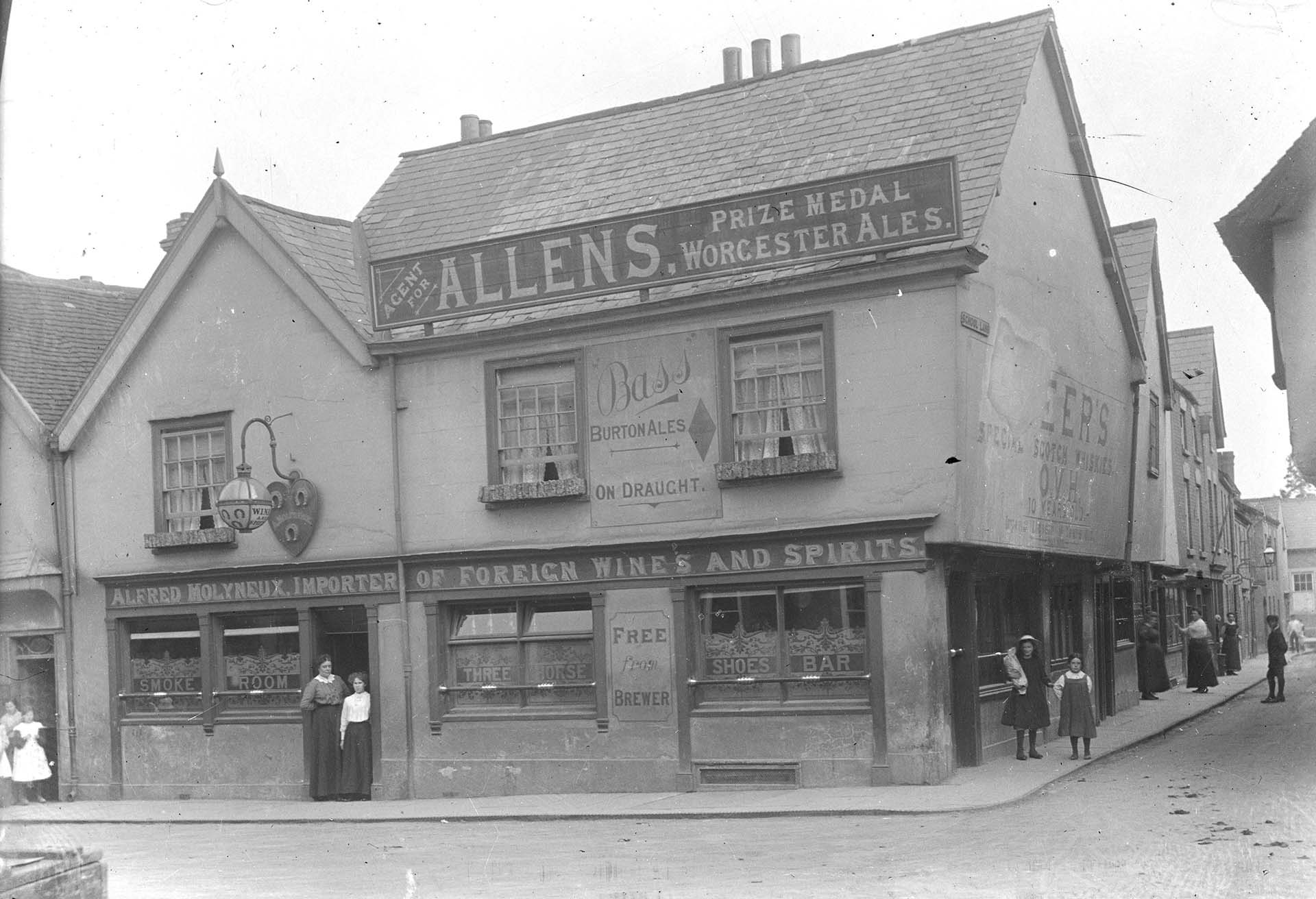
The timber frame of this current building probably dates from the 1600s. For many years, it was the Three Horseshoes public house.
The first building plots on the south side of Corn Square were laid out in the 1100s by the monks from the Priory, as speculative development, creating shop units for rent which would create income. Originally, the plots ran all the way back to Etnam Street. School Lane was also part of the plan, allowing residents of Etnam Street quick access to the main market square. The present building is over 400 years old, and has been a meeting place for much of that time. The 1848 report from the Hereford Times reports a horse sale taking place there during Leominster Fair.
Merchants House, 10 Corn Square
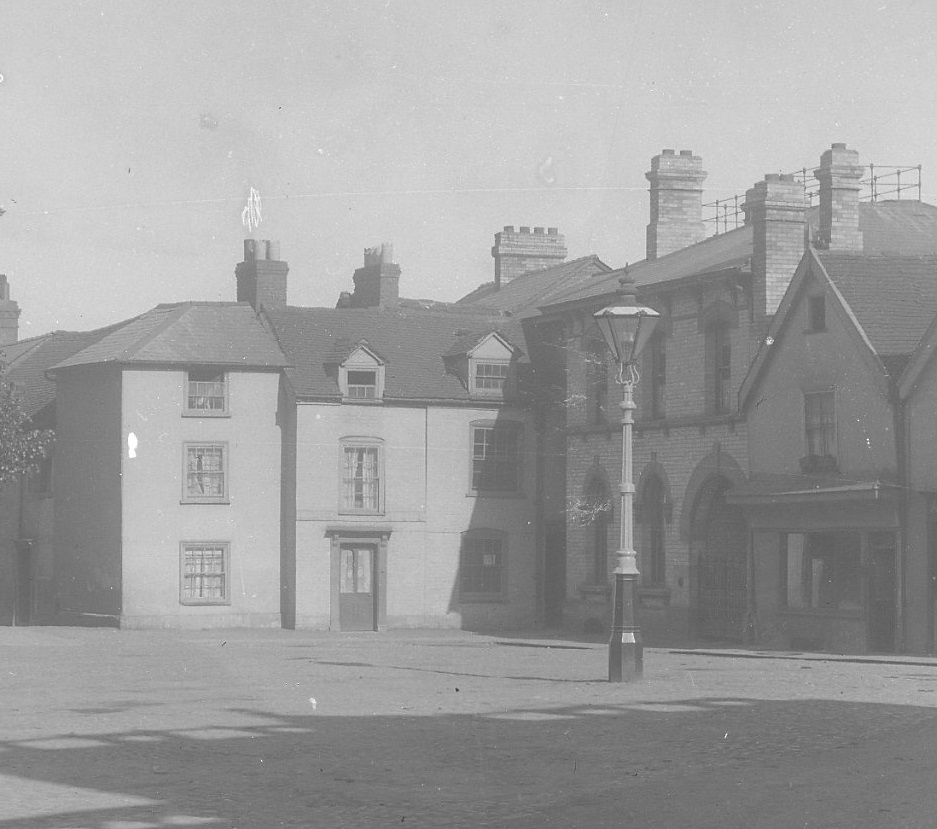 |
| 10 Corn Square in the early 20th century. |
Some years ago, 12th century pottery was found under the floor of this house, so there may have been a building on this site for over 800 years, although the present house is not that old. Over the years, many families have lived there and run different businesses from the premises. From the 1840s - 1860s, the Vale family lived there, and two daughters ran a dressmaking and millinery business. In the 1870s, the house was split into two dwellings, and by the 1900s, into three.
In 1906 it was bought by Sydney Bridge, the house decorator and Methodist preacher who became a Leominster philanthropist. He was a successful businessman, who bought many properties, and renovated them for rent. (He also gave Sydonia Park to the people of the town.) After his death in 1940, the building passed through several owners, and became a solicitor’s office. It was turned into a restaurant and antique shop in 2012.
The Merchant House is now a cafe, with a walled courtyard, serving teas, coffees, lunches, snacks and cream teas. The antiques centre on the upper floor is home to several dealers supplying furniture, china, tools, books, materials and many other interesting items.
The Rankin Club, 7-8 Corn Square
_1.jpg) |
| The Rankin Club was restored in 2023 as part of the Leominster High Street Heritage Action Zone Scheme. |
It is not clear what previous buildings on this site looked like. Judging by some of the exposed wood inside the current one, it is likely that there was a timber-framed building here by the 1600s. Like many other wooden buildings in Leominster, it was extended and given a brick frontage and new windows in the 1700s or early 1800s, as the town grew in wealth and importance. This was thought more modern and fashionable. The existence of an arched carriage entrance, the large front door, and a large cellar hatch, suggest the building may have been used as an inn or hotel in the 1700s.
By 1860, the large building had been converted into a Training & Industrial Home for girls. They were taught domestic skills, reading, writing, and maths, preparing them for a life as servants. By 1888, it had closed. The headmaster of the nearby Grange Academy moved his school into the building and renamed it Grange College. It became co-educational, with boarding & day places. It had a very modern curriculum, and advertised adult classes, including women-only chemistry lessons.
In 1896, the Leominster News advertised that the boys’ department of Grange College would move to Dutton House on Etnam Street, whilst a small girls’ school remained in Corn Square. By 1912 the girls had gone, but there was a boy’s school in Dutton House until the 1960s.
In the early 1900s, the building was converted again, as a base for the local branch of the Conservative Party. In 1921, it was renamed the Rankin Club, after a former Conservative MP for the town. The building is still in use as a club and Conservative party offices today.
3 Corn Square
Now Wetherspoons
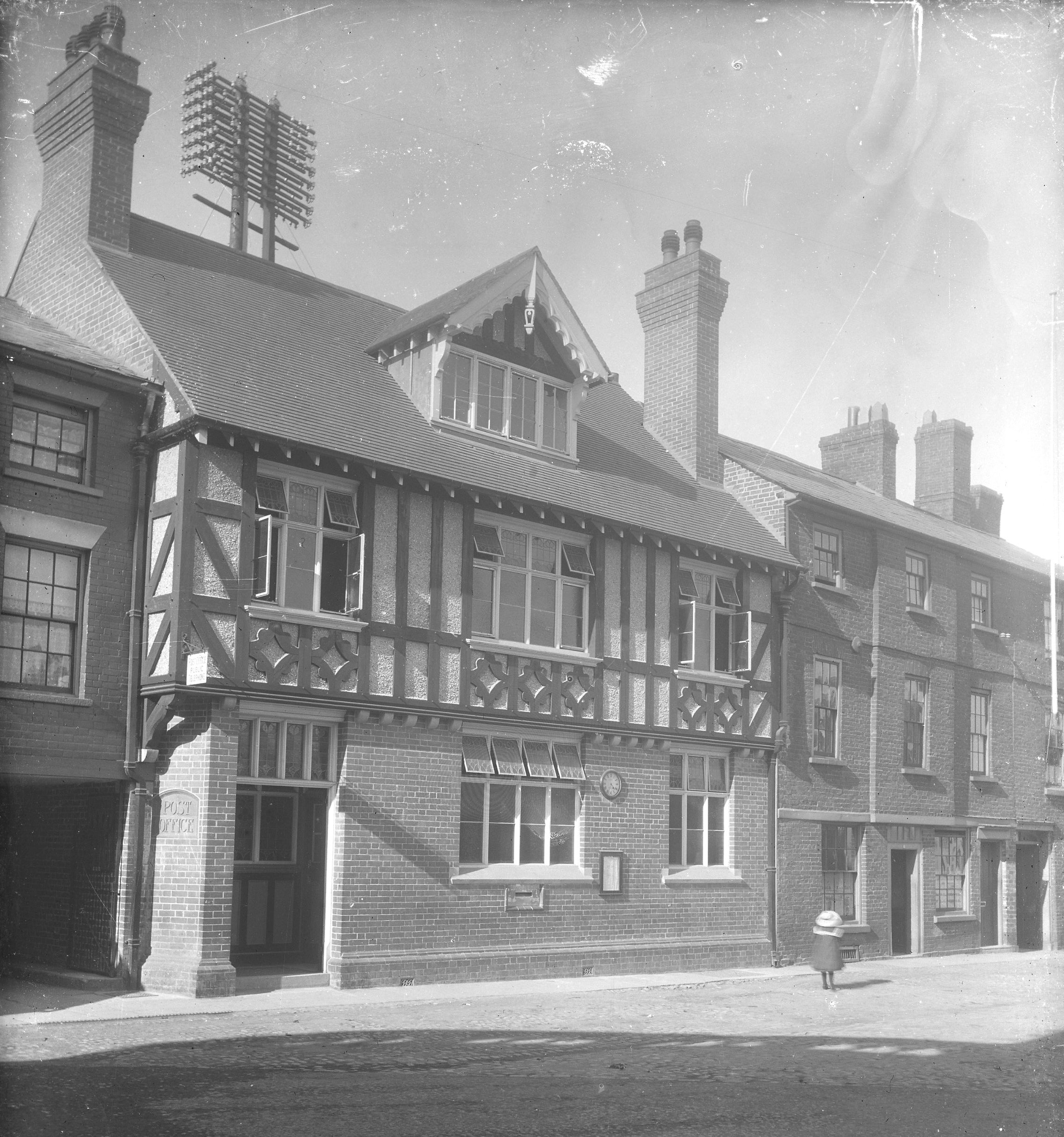 |
| Leominster’s Post Office in the early 20th century. |
This building was built in 1908 and was originally Leominster’s main Post Office and telephone exchange. It was built on the site of an old timber-framed building used as a dressmaker’s shop, demolished in the 1880s.
The telephone exchange was a vital communication hub, before people had phones at home. At the outbreak of the First World War in 1914, the exchange stayed open all night as reserve soldiers were summoned by phone and telegram.
1 Corn Square
Now the Press Rooms
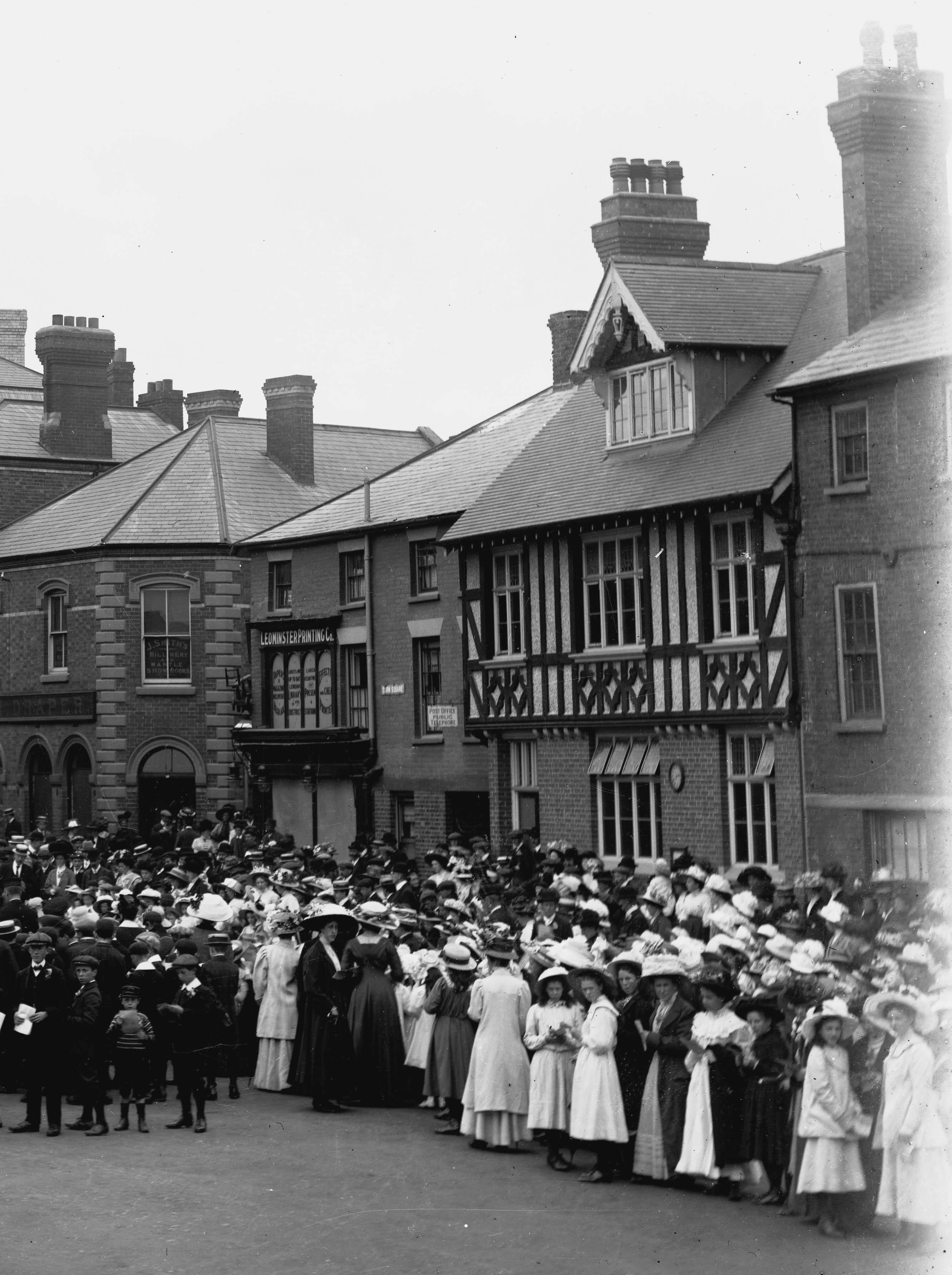 |
| 1 Corn Square in the late 19th century. |
The two buildings at 1 Corn Square and 27 Drapers Lane are both closely linked to the Southall family. The first Southall to live here was John, who moved in with his family in 1808, when he established his draper’s business. The family were Quakers, members of a significant religious community in the town, who served Leominster in many ways. Many of them wrote books and pamphlets, often about their faith. This led them to an interest in printing, as well as fabric, to spread their words. In 1858, the business and family home were taken over by John’s son, the 28-year-old John Tertius Southall. He bought the Leominster Printing Company, with his son, Arthur. Arthur later moved into the house, where he lived until 1923. He published several local newspapers, including the Leominster News. The Leominster Printing Company was still publishing papers until the 1960s.
Newspaper advertisements show that this shop and 27 Drapers Lane next door were mostly occupied by printers and tailors for the last 150 years. Edwin Storr worked as a tailor there until 1885, followed by CM Binyon until 1904. Thereafter, the premises were occupied by the Leominster Printing Company until the late 20th century.
For a short period, the shop became the Tourist Information Centre for the town. It has now reverted to being a pub, with the name The Press Room, which looks back to its days as a printing and publishing shop.
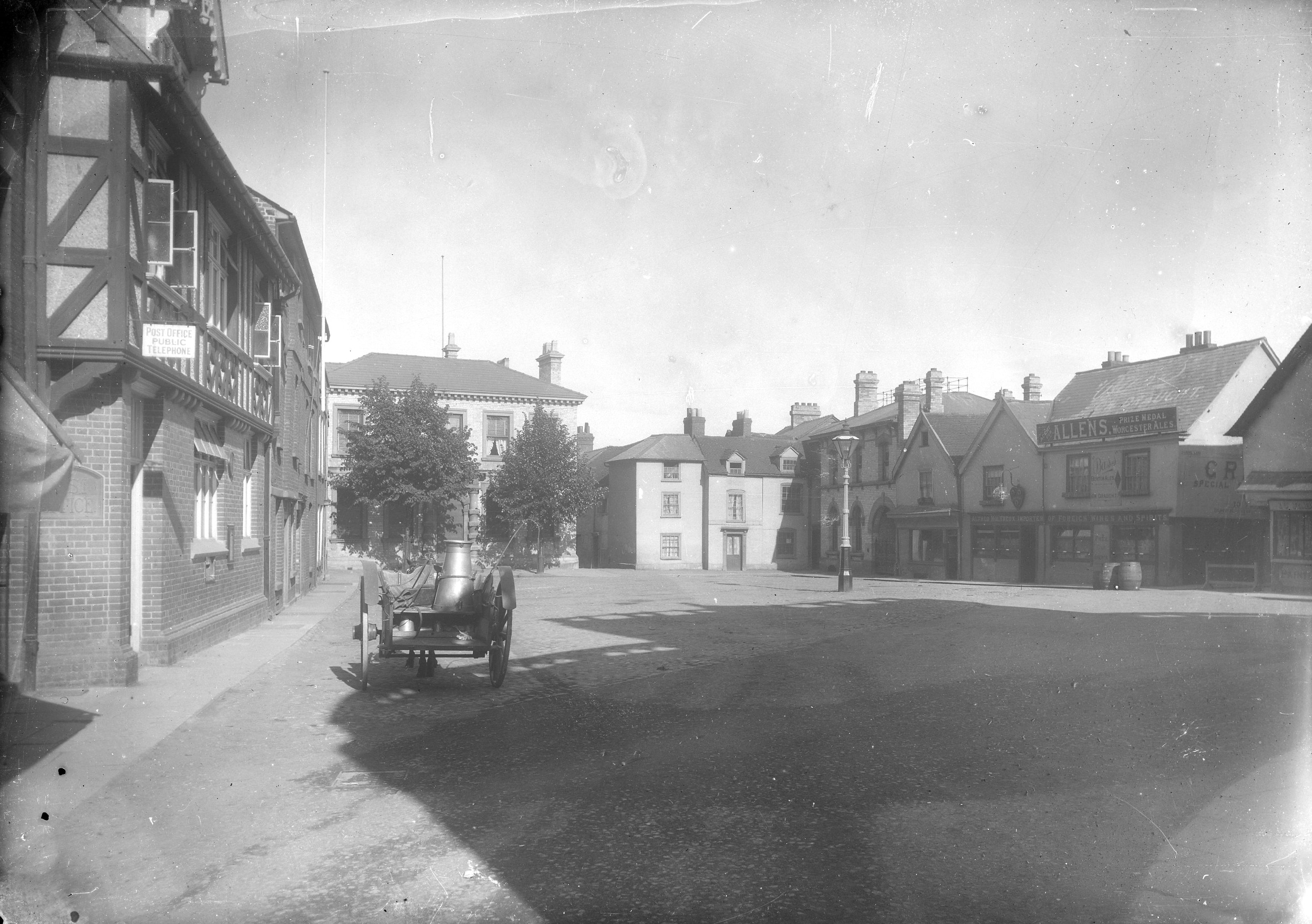
Corn Square in the early 20th century.
Image Acknowledgements
Images of advertising sourced from British Newspaper Archive (www.britishnewspaperarchive.co.uk) and The British Library Board.
© 2022 Findmypast Newspaper Archive Limited.
Images of Leominster shopfronts with kind permission from Herefordshire Museum Service.

